What dumbbell weights should I use?
We asked the experts what dumbbell weight you should use if you’re new to resistance training


Working out with weights doesn’t need to be overwhelming – even when you’re a beginner – but you may be wondering what dumbbell weight you should use.
Whether you’re using the best adjustable dumbbells for an arm workout or for a lower body exercise, starting with a lower weight – around 3-5kg – is key. Once your body has adapted to the weight while performing the exercises, you can look to increase the dumbbell weight.
However, you need to be careful that you don’t go too heavy with the dumbbell weight too quickly, as you could injure yourself or fail to hold the correct form for the exercise.
Here we talk to the experts about what dumbbell weight you should use for beginner strength training, and which dumbbell weights to use for specific exercises such as goblet squats and dumbbell curls.
What dumbbell weights should you start with?
If you’ve never lifted weights before, the best way to see what dumbbell weight is right for you is to test them out. Start with a low weight and see how it works for different exercises.
“The beauty of strength training is that it is tailored to your ability, and not your gender,” says Nicole Chapman, PT and the creator of Power of Mum. If you’re a beginner, Chapman advises starting with 5kg weights – switching to one weight if you start to struggle. However, David Wiener, PT and Training Specialist at Freeletics, told Fit&Well that the weight you need will depend on your goal.
“If you want to build strength, use a weight which is heavy enough to perform at least 3-6 reps with. If you are looking at building muscle, you should be using a weight heavy enough for eight-12 reps. If you want to build your endurance, you’ll need to use a lighter weight which you can do 15-25 reps with” Weiner said.
Get the Fit&Well Newsletter
Start your week with achievable workout ideas, health tips and wellbeing advice in your inbox.
When should you increase your weight?
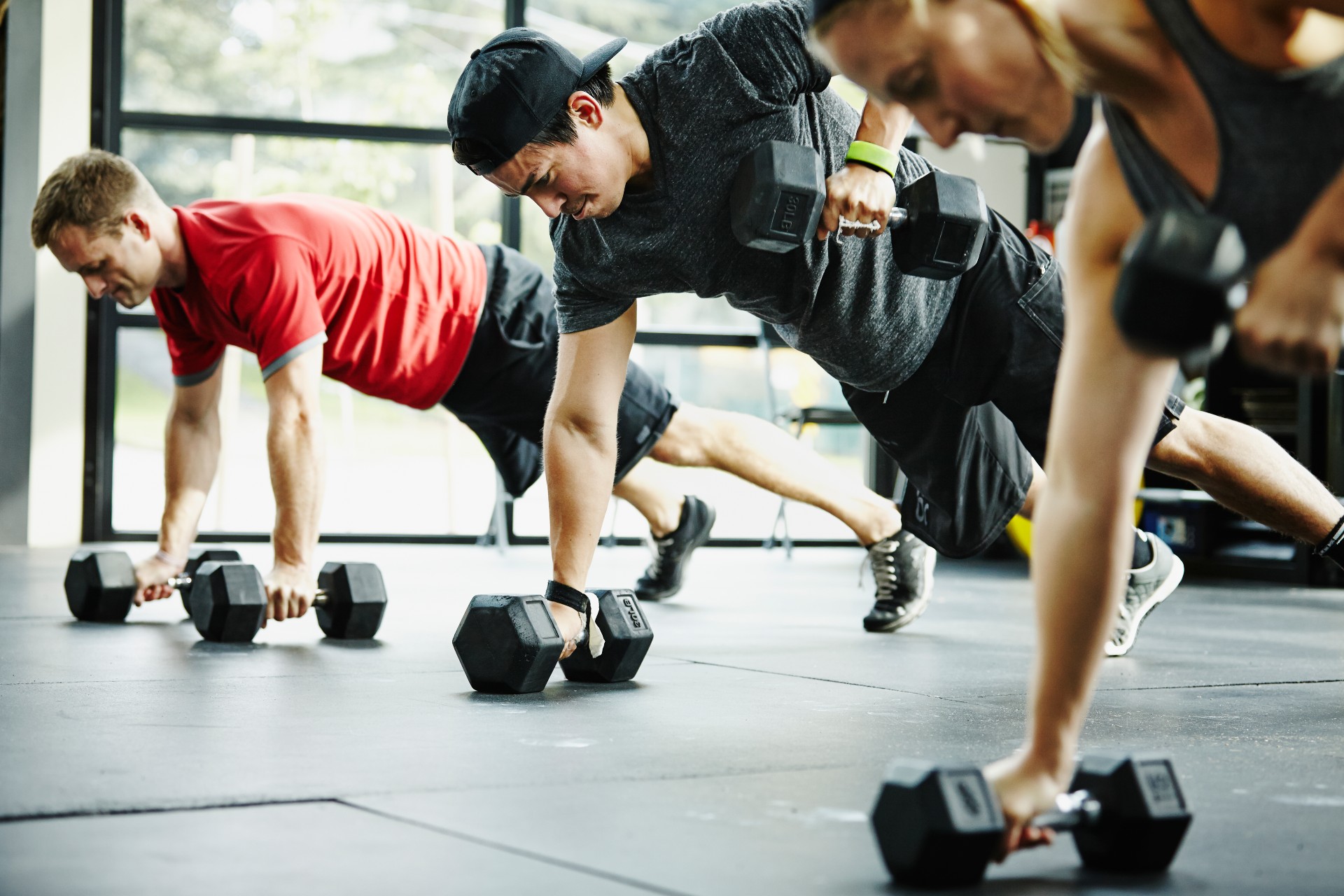
If you’re constantly using the same weights, you won’t see any progression – so once you’ve got to grips with how to use dumbbells and the weight starts to feel easy, you’ll need to increase them.
“A method called progressive overload is what we use in all aspects of fitness, but comes into play very strongly when looking at weight training,” explains Rachael Penrose, PT for VAHA.
“There is no specific time frame on when you should be increasing your weights because it is subjective. But as your muscles get stronger, you will plateau if you stick to the same weight, so you consistently (I would recommend every few weeks) need to increase the weights you are using to challenge and grow your muscles.”
Chapman adds: “A good rule of thumb is that if you can do 12 reps easily then your weight is too light. You want the last two-three reps to be challenging to complete but not too hard that you lose the correct form.”
Should you change your weights when performing upper / lower body work?
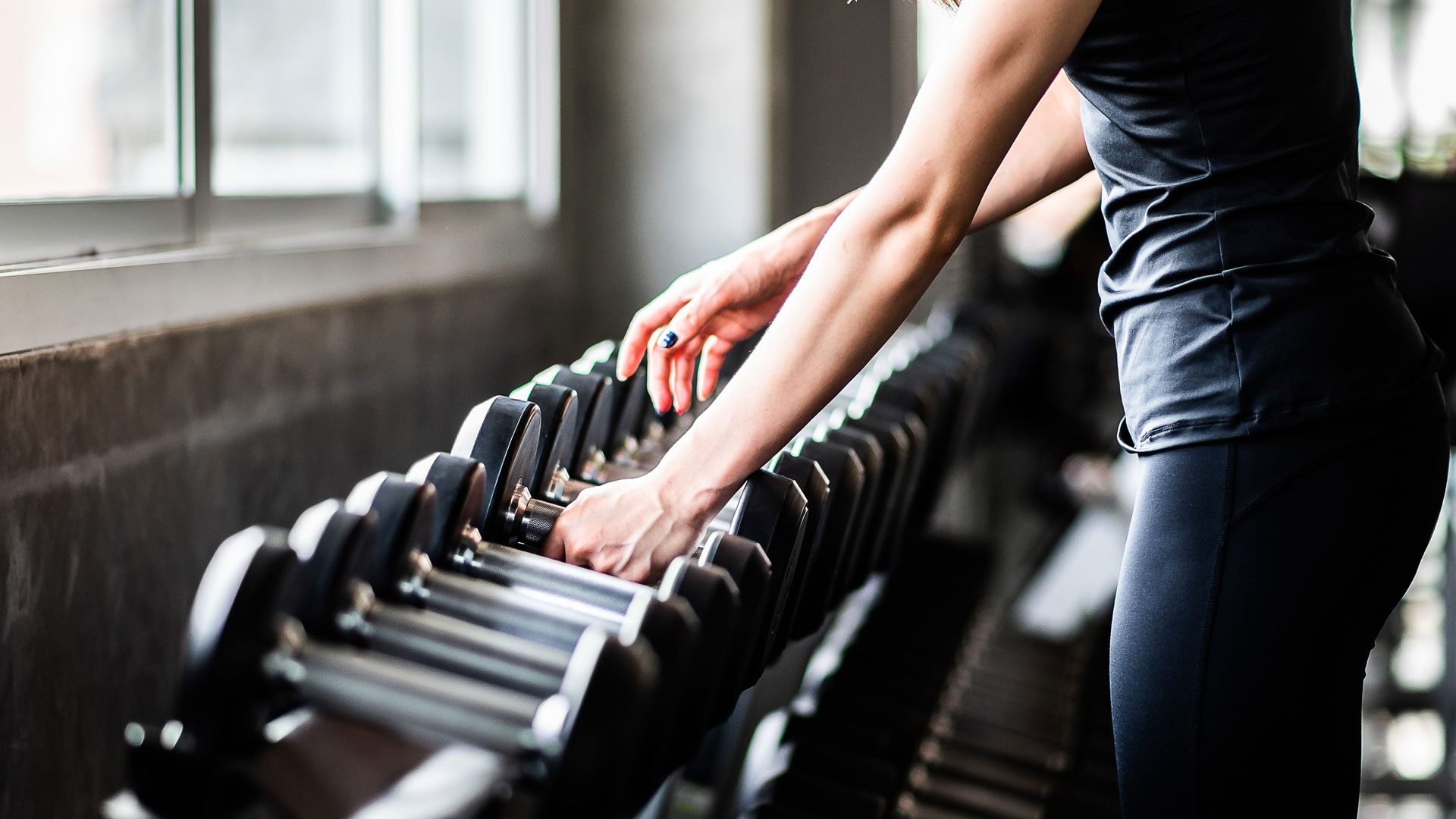
You should start with lighter weights for any upper bodywork. For the lower body, you can naturally go a little higher. Get a feel for what you’re comfortable with and start to progress from there.
Chapman also says that for compound movements (multi-joint lifts like squats, deadlifts, bench presses, and rows) you can use heavier weights because you recruit more muscles to lift the weight than you do with single-joint exercises, such as tricep extensions or bicep curls.
But how do you know if you’re using the right weight? One of the simplest ways is to regularly check in with yourself, says Weiner. “Ask yourself questions. Is this too easy? Is this too hard? Is it impossible? Is this a risk?”
What weights should you use for…
Dumbbell curls and dumbbell chest press?
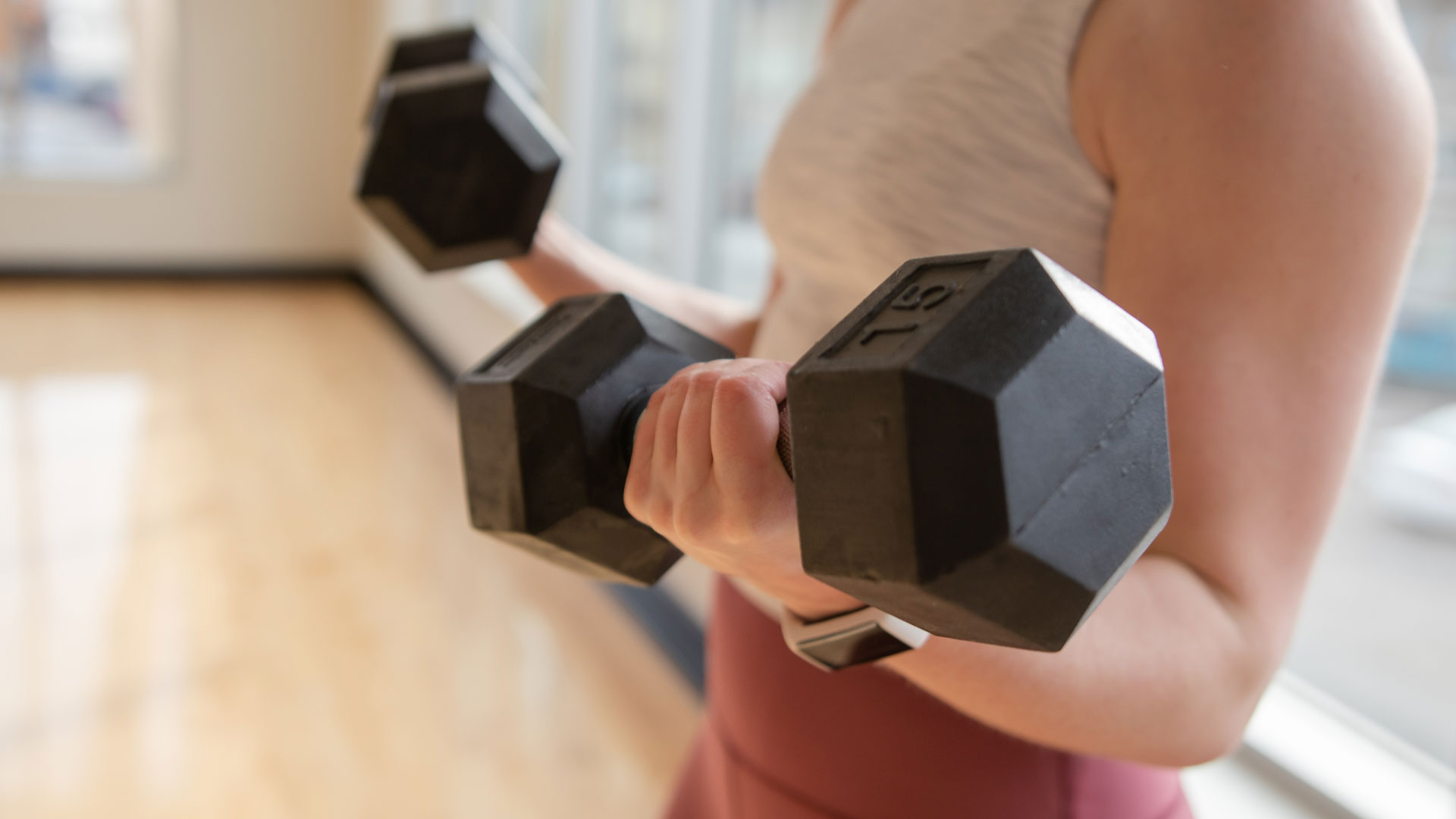
If you’re new to lifting dumbbells, start lighter than you think you can manage. This is to make sure that you don’t pull a muscle or injure yourself. Penrose explains: “You would need to start with a lighter weight for dumbbell curls and chest press as your biceps and pectorals in your upper body are smaller, and generally weaker, than the dominant muscles in your lower body.”
Start by using 3-5kg dumbbells for 12 reps, increasing the dumbbell weight if you can manage them without overdoing it and without feeling any pain in your muscles.
“Naturally, the range and strength in our body and its muscles are huge. For example, our quadriceps can take much more load than say your rotator cuff and the muscles surrounding your shoulder,” Penrose adds.
Goblet squats and weighted lunges?

With goblet squats and lunges, you’ll be relying on your glutes and leg muscles, which are stronger from everyday use. Start with 8-10kg dumbbells and progress when you feel more comfortable.
“Lunges and squats rely on your glutes, quadriceps, and hamstrings, which are all predominately larger and stronger muscles,” explains Penrose. “They are therefore able to take much more load.”
However, Weiner says that for goblet squats, you will probably be able to use heavier dumbbells than you would with weighted lunges.
“Start with 10kg dumbbells for a goblet squat, and if this seems too easy, start to increase it every time you train.”
Sarah is a freelance journalist who writes about fitness and wellbeing for the BBC, Woman&Home and Tech Radar. During lockdown she found her love of running outside again and now attempts to run around 50 miles a month. When it comes to other fitness, she loves a sweaty cardio session – although since she’s been working out from home she’s sure her downstairs neighbors aren’t too happy about it. She also loves to challenge herself - and has signed up to do hiking holidays, intense bootcamps and last year she went on her dream activity holiday: paddle boarding around deserted islands in Croatia. On her rest days, she loves to recover with a simple yoga flow session – the perfect antidote to her active fitness schedule.
-
 This is the exact running plan I followed for two months to finally get my 5K run time under 30 minutes
This is the exact running plan I followed for two months to finally get my 5K run time under 30 minutesAnd it helped me fall in love with running again
By Ruth Gaukrodger Published
-
 I increased my step count back to 10,000 a day after time off—here’s how I did it sustainably
I increased my step count back to 10,000 a day after time off—here’s how I did it sustainablyIt took me five weeks to get back to the ideal range
By Lou Mudge Published
-
 What’s the best open water swimming technique?
What’s the best open water swimming technique?Fitness Perfect your open water swimming technique and you'll be able to explore your local lakes and pools with confidence
By Maddy Biddulph Published
-
 The best trekking poles 2025
The best trekking poles 2025Buying guide Protect your knees and increase stability with the best trekking poles
By Harry Bullmore Published
-
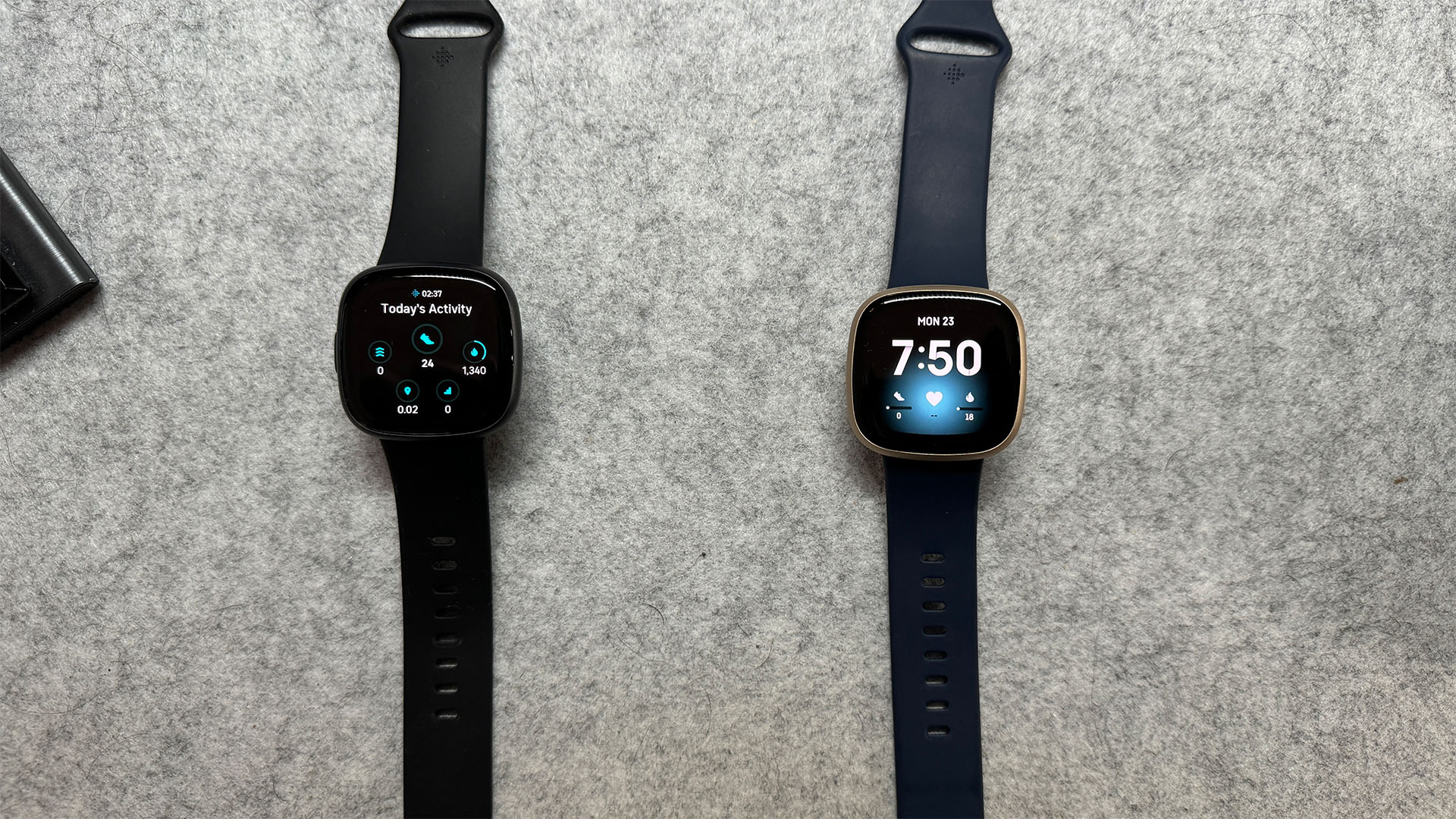 Fitbit Versa 3 vs Versa 4: here's the one I recommend buying
Fitbit Versa 3 vs Versa 4: here's the one I recommend buyingVersus There's little difference between these models, but the Versa 3 is much cheaper
By Lloyd Coombes Last updated
-
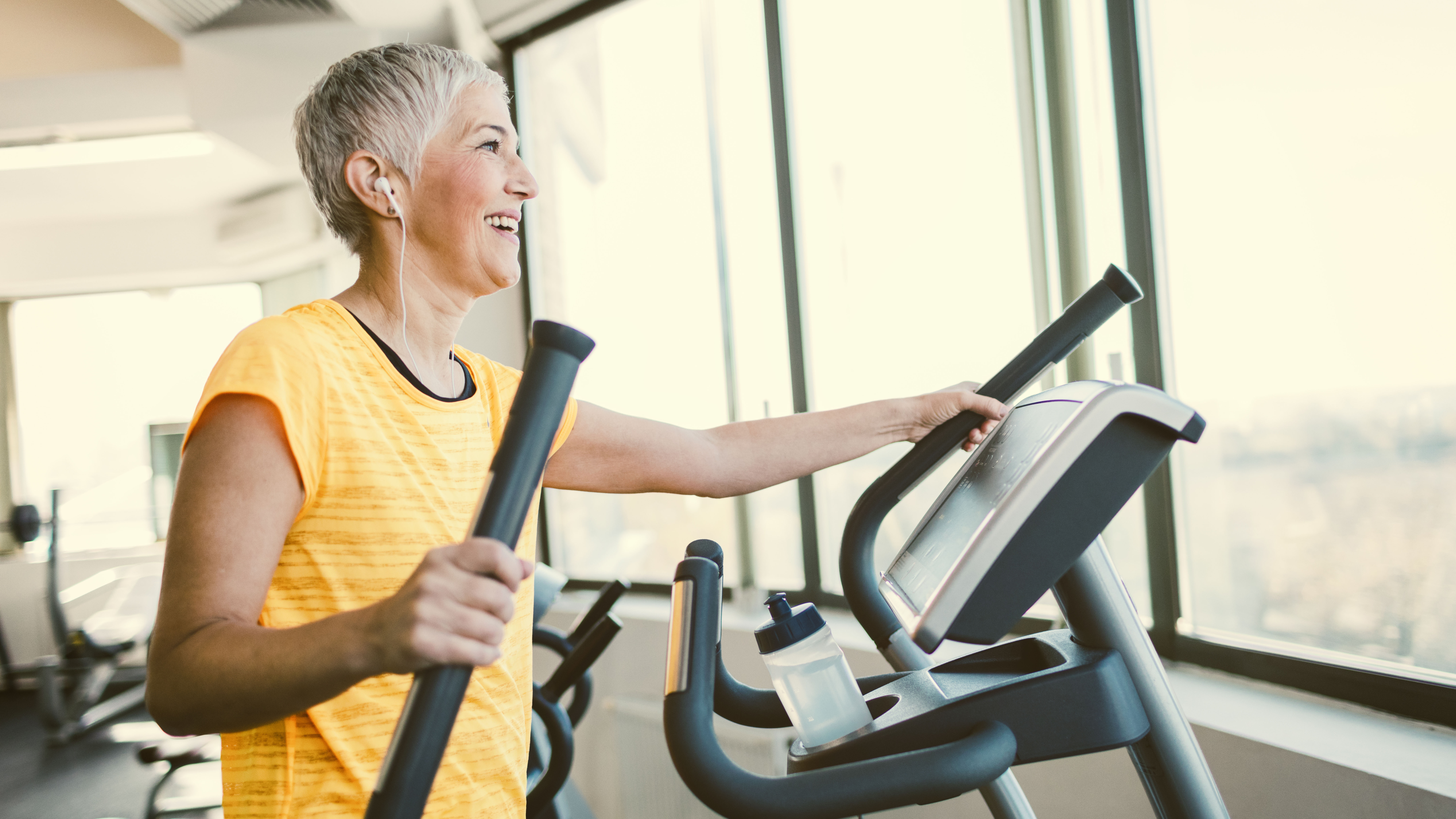 Best elliptical machines for home workouts
Best elliptical machines for home workoutsBuying guide Need a low-impact workout that’s easy on the knees? Try one of the best elliptical machines
By Sam Hopes Last updated
-
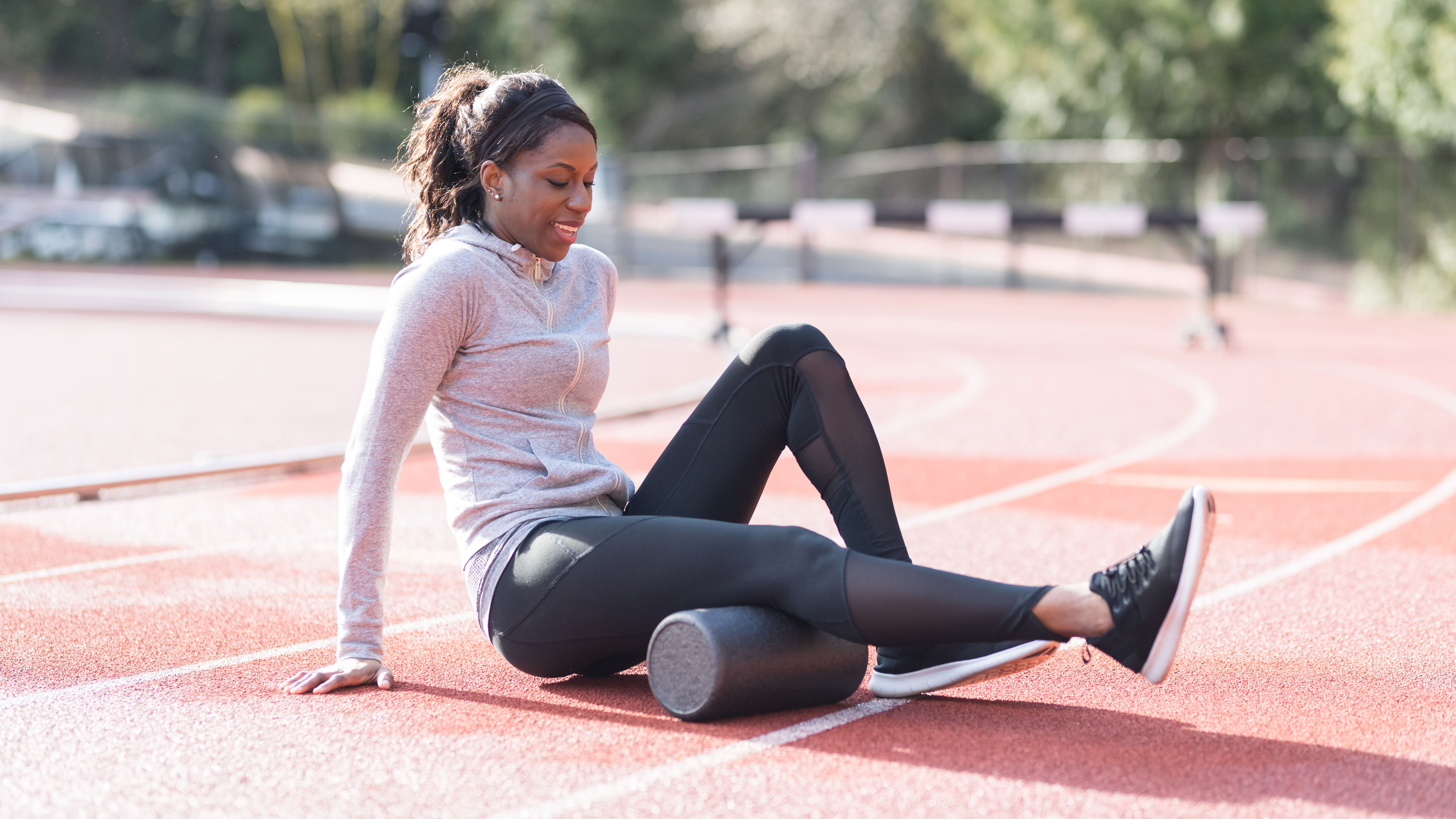 Best foam rollers for soothing sore muscles
Best foam rollers for soothing sore musclesBuying Guide Ease post-workout pain with our pick of the best foam rollers
By Harry Bullmore Last updated
-
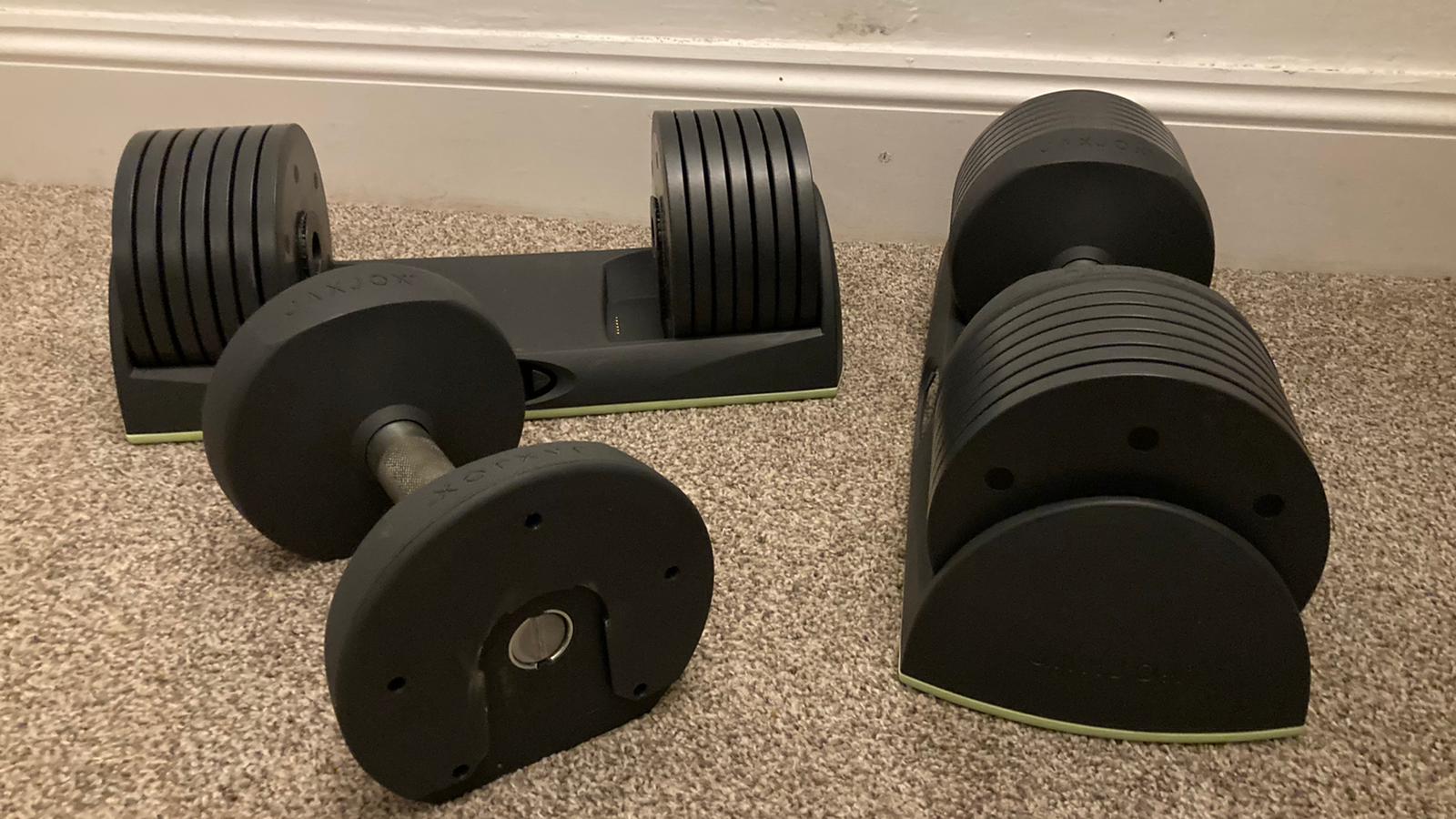 The JAXJOX DumbbellConnects have changed my home workouts forever
The JAXJOX DumbbellConnects have changed my home workouts foreverIf you want to start strength training at home, the JAXJOX DumbbellConnect adjustable dumbbells are the ultimate home workout tool
By Harry Bullmore Published
-
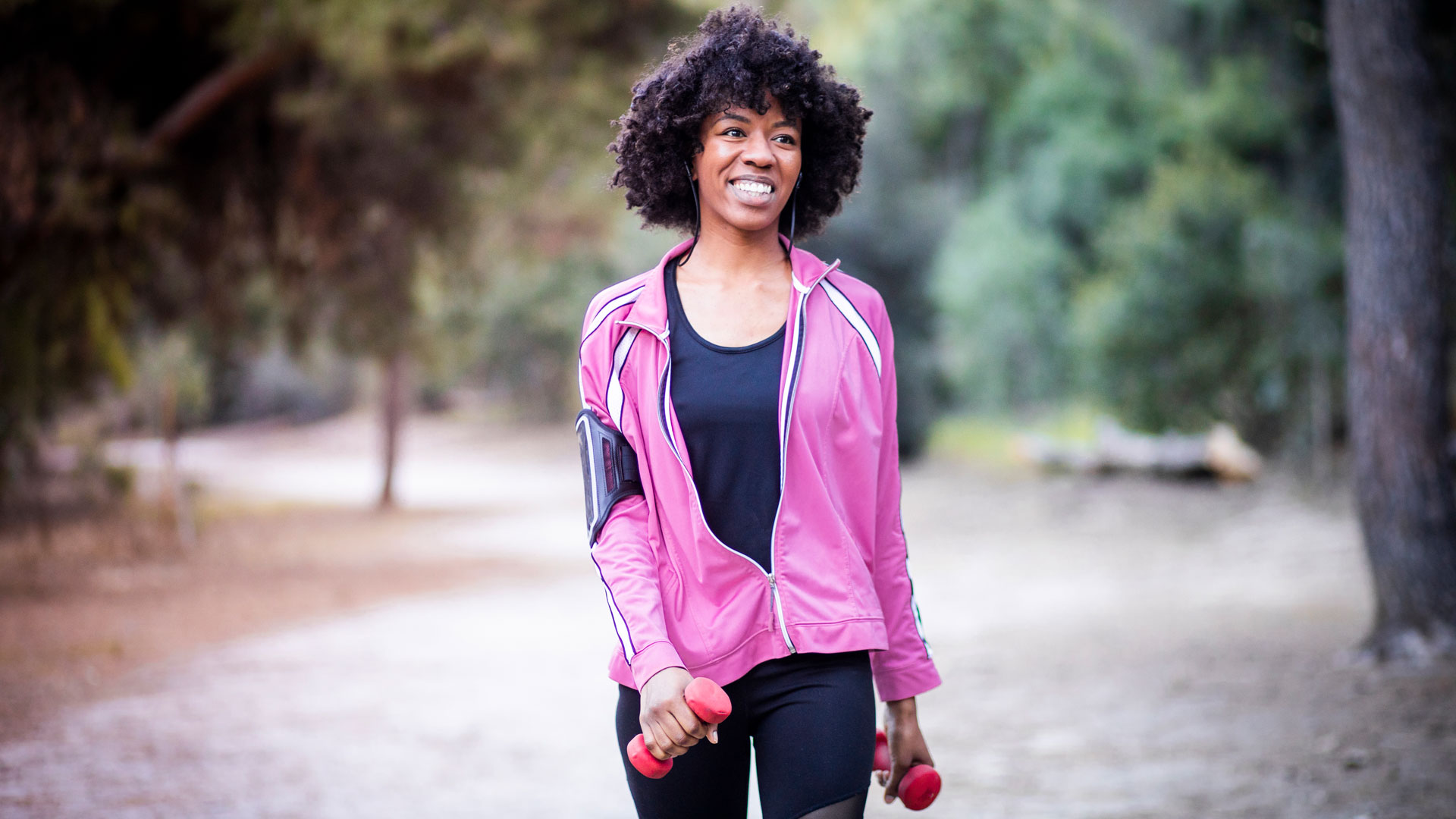 How to go walking with weights to build muscle
How to go walking with weights to build muscleFitness Try working out outside and go walking with weights for some serious health benefits
By Harry Bullmore Published
-
 Does hiking build muscle?
Does hiking build muscle?Fitness Does hiking build muscle? Here’s how this outdoor activity affects your strength
By Lily Canter Published